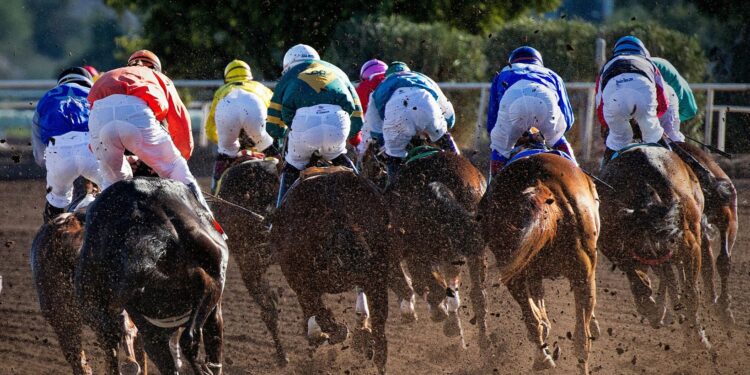The Clement L. Hirsch Stakes returns to Del Mar on August 2, marking one of the summer’s most anticipated races for fillies and mares. Now in its 55th running, this Grade I event not only draws a quality field but also holds serious stakes implications. The winner receives an automatic bid to the Breeders’ Cup Distaff, adding a layer of consequence and value to every decision on the board.
At 1 1/16 miles over dirt, this isn’t just a test of speed, it’s a test of form, class, and staying power. Bettors looking for angles will need to balance seasonal trends with track bias and recent form cycles.
Field Composition Will Shape The Board
The horses entered for this year’s Hirsch Stakes will largely dictate the tempo and betting action. Since the event is restricted to fillies and mares aged three and older, form comparisons often cut across class and generation lines. That creates an intriguing balance of speed versus stamina and experience versus upside.
In recent years, horses based at Santa Anita Park and Los Alamitos have dominated the Del Mar scene. Trainers like Bob Baffert and John Sadler often prep their runners through the Southern California schedule. If names like Adare Manor or Desert Dawn appear in the field again, expect short odds and heavy public interest. Bettors should closely review previous finishes over the same surface and distance, especially for horses returning to Del Mar with stakes credentials.
August’s mild weather and relatively deep dirt surface often favor late kickers more than speed types. These traits should weigh heavily when narrowing down your Clement L. Hirsch Stakes picks, especially in a field that may blend tested and proven names with emerging threats.
Conditions Reward Tactical Versatility
The Clement L. Hirsch Stakes isn’t known for runaway wire jobs. Its configuration, a two-turn 1 1/16 mile dirt route, places emphasis on pace management and trip efficiency. That plays into the hands of jockeys with experience on this surface and horses that can stalk or switch gears when needed.
While many believe drawing the rail at Del Mar gives an early advantage, recent results suggest it depends more on the horse’s preferred style. A front-runner who times the break can use the rail, but a stalker may get trapped if the pace collapses. Bettors should study previous trips and break patterns before assuming inside draws will help a horse’s chances.
This race often serves as an event in and of itself, rather than a stepping stone. That means most contenders arrive well-rested, fully cranked, and ready to fire.
Several past winners were making their second start off a layoff or third start of the season, classic spots for peak fitness. Keep an eye on work tabs in the weeks leading up to August 2. Horses with two or three spaced drills, especially bullets at five or six furlongs, tend to fire big shots here.
Wagering Strategies For This Setup
There are multiple betting angles in play for the Clement L. Hirsch Stakes, from basic win bets to more sophisticated exactas and trifectas.
Exotic Bets Around A Strong Favorite
If a heavy favorite emerges, such as a proven Grade I mare, the win pool might offer limited upside. But there’s usually room to get creative underneath. Use exactas and trifectas to box the favorite with rising contenders or pace complements. Even when the favorite wins, exotic payouts often remain respectable due to deep undercard interest.
Finding Overlay Plays Through Trip Handicapping
This race frequently produces upsets not because of raw talent gaps, but due to race flow. A mare who got trapped behind a slow pace last out may now get a better trip behind two dueling speedsters. Watching replay footage is one of the few ways to uncover trip trouble or hidden energy distribution. Those details often go unnoticed by the public but can signal betting opportunities at double-digit odds.
Avoid Overweighting Past Class Drops
Class droppers often attract attention on paper, but not all class drops are created equal. A mare exiting a Grade II where she never fired might have simply lost form. Others may have had legitimate excuses or poor setups. Avoid relying solely on class level when assessing chances, pair it with form cycles and intent.
Spread Bets In Deeper Undercard Pools
Even with a smaller field in the main event, Del Mar’s Saturday cards are often deep. If a standout dominates the Hirsch Stakes, consider using her as a single in horizontal bets like doubles or pick threes, then spread aggressively in surrounding races. It’s one way to extract value from a top-heavy main event without forcing bets into a shallow win pool.
Breeders’ Cup Implications Influence Intent
As a “Win and You’re In” qualifier, this race offers a guaranteed spot in the Breeders’ Cup Distaff. That shapes not just the entries, but the race-day goals for certain barns. Some may use the event as a final prep, while others come in to win outright.
 Trainers aiming to punch their ticket to the Breeders’ Cup often make subtle but telling changes. A switch to a high-profile jockey, blinkers-on moves, or longer morning gallops can reveal heightened intent. Conversely, if a barn is already planning to ship elsewhere, their top filly might be under wraps. Scrutinize both the work pattern and race-day changes to distinguish between all-in efforts and fitness-building runs.
Trainers aiming to punch their ticket to the Breeders’ Cup often make subtle but telling changes. A switch to a high-profile jockey, blinkers-on moves, or longer morning gallops can reveal heightened intent. Conversely, if a barn is already planning to ship elsewhere, their top filly might be under wraps. Scrutinize both the work pattern and race-day changes to distinguish between all-in efforts and fitness-building runs.
This year’s older filly and mare division remains fluid. While a few names top the national rankings, there is no dominant force. That opens the door for a new name to emerge from this race as a legitimate Breeders’ Cup contender. Bettors should be prepared to reassess their future book odds or seasonal rankings based on the outcome. For futures-minded players, this event acts as a critical yardstick.
Momentum Builds Toward A Defining Race Day
With a rich purse, high-level competition, and direct ties to the Breeders’ Cup, the Clement L. Hirsch Stakes stands tall among summer dirt races for females.
For serious bettors, it offers both structure and surprise, limited chaos but hidden angles. Many of the game’s best connections circle this date months in advance, and it shows. Race-day performance here can signal which mares will factor into year-end awards and future Grade I races.








